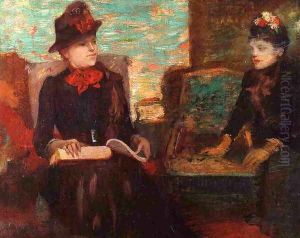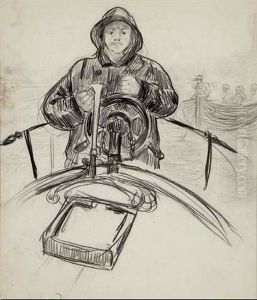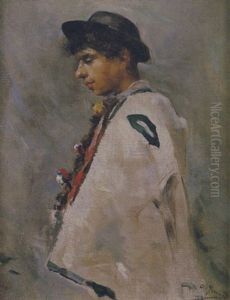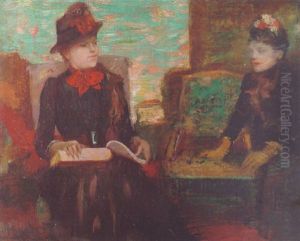Adolfo Guiard y Larrauri Paintings
Adolfo Guiard y Larrauri was a Spanish painter, born in 1860 in Bilbao, in the heart of the Basque Country. His life and work are deeply intertwined with the cultural and artistic movements of late 19th and early 20th century Spain, a period marked by a rich cross-pollination of ideas and styles between Spanish and French artists. Guiard's artistic journey reflects the broader currents of his time, as he navigated through the influences of Impressionism, Symbolism, and the nascent stirrings of Modernism, while always retaining a distinctive voice that celebrated his Basque heritage.
Guiard's education and early career were shaped by his travels and studies in Paris, where he was exposed to the avant-garde movements of the day. This exposure was crucial in shaping his artistic vision, which combined the light and color of the Impressionists with a Symbolist's interest in dreamlike, often mystical themes. Despite his immersion in the Parisian art scene, Guiard remained deeply connected to his Basque roots, and this connection informed much of his work, which often depicted scenes of Basque life and landscapes with a sensitivity to light and atmosphere that recalls the French Impressionists.
Throughout his career, Guiard enjoyed recognition and success, participating in numerous exhibitions in Spain and France. His work was appreciated for its unique blend of modern stylistic elements with subjects that were deeply rooted in the Basque cultural identity. Despite his ties to contemporary movements, Guiard's art did not fully conform to any single style; rather, it is characterized by a personal interpretation of his subjects, marked by a lyrical quality and a delicate handling of color and light.
Adolfo Guiard y Larrauri's life and career were cut short by his untimely death in 1916. Today, his work is celebrated for its contribution to the Basque cultural renaissance of the late 19th and early 20th centuries and its place within the broader context of Spanish art history. Guiard remains a figure of interest for scholars and art lovers alike, who are drawn to his ability to bridge different worlds - the traditional and the modern, the local and the international - in his quest to capture the essence of his time and place.



